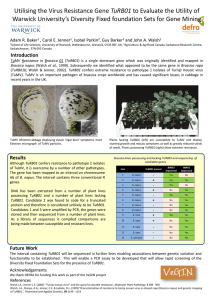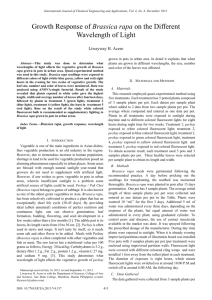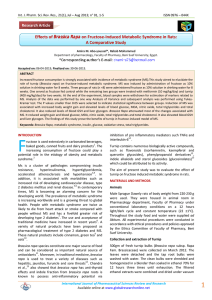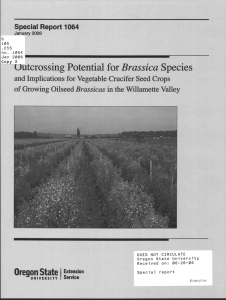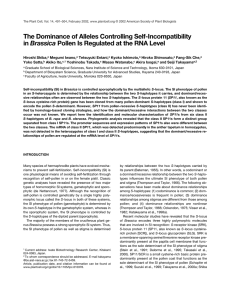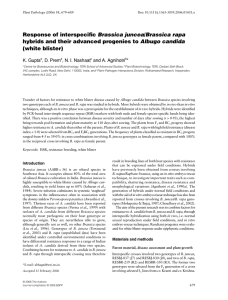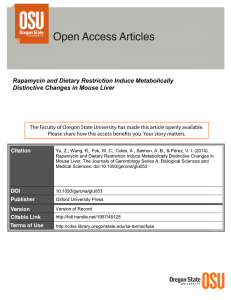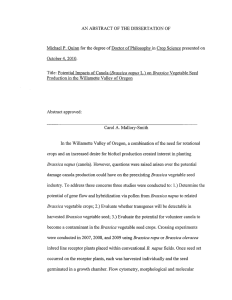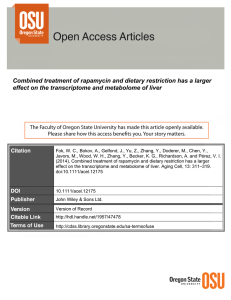Heat tolerance in Brassica rapa - The UWA Institute of Agriculture
advertisement
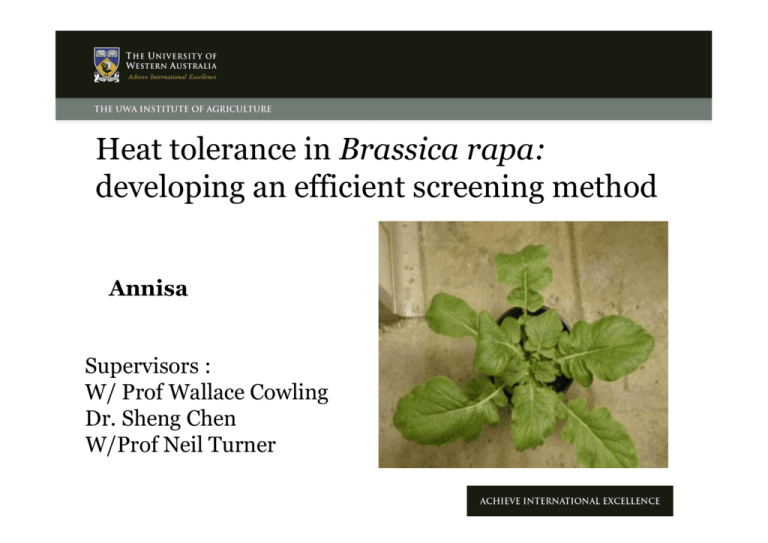
Heat tolerance in Brassica rapa: developing an efficient screening method Annisa Supervisors : W/ Prof Wallace Cowling Dr. Sheng Chen W/Prof Neil Turner Acknowledgements Funding Australian Development Scholarships The School of Plant Biology, UWA ARC Linkage Project LP110100341 Seed sources Australian Temperate Field Crops Collection (ATFCC) Norddeutsche Pflanzenzucht Lembke AG (NPZ) The Leibniz Institute of Plant Genetics and Crop Plant Research (IPK) Help, teaching and technical assistance Prof. John Kuo and Mr. John Murphy (Centre for Microscopy, Characterization and Analysis) Assoc/ Prof. Guijun Yan Mr. Rob Creasy and Mr. Bill Piasini (Plant Growth Facilities) Ms. Helen Bowler and Ms. Yiming Guo The University of Western Australia The global warming problem Intergovernmental Panel on Climate Change, 2001 The University of Western Australia Why choose Brassica rapa ? B. napus (canola) suffered a genetic bottleneck, so canola needs a new genetic source to broaden genetic background B. rapa is a diploid ancestor of tetraploid Brassica napus B. rapa has wide geographical distribution and broad genetic diversity The University of Western Australia Different type of Brassica rapa The University of Western Australia Biogeography of the origin of B. rapa compared to other Brassica species United Nations Food and Agriculture Organization, Rome, cited in Dixon 2007 The University of Western Australia Large geographical distribution + Broad genetic background Tolerance to heat How do I screen for heat tolerance? The University of Western Australia How do I choose my accessions? Self compatible Spring type Some selected from “hot” (tropical) region Early flowering One B. juncea and six B. rapa The University of Western Australia Two treatments: Normal Heat with supplemental water to avoid drought stress Screening methods: Leaf temperature Bud temperature Stomatal conductance Bud tagging, observation continues until seed harvesting Pollen viability Pollen tube growth The University of Western Australia Heat treatment applied during the early stages of flowering o ( C) Control 40 Heat 35 30 25 20 15 10 5 0 1 2 3 4 5 6 7 8 9 10 11 12 13 14 15 16 17 18 19 20 21 22 23 24 Time (hours) 16 hours day light 8 hours night Controlled environment room (CER) Seven days of heat treatment The University of Western Australia What have I observed so far? Leaf and bud temperature were similar to the control No water stress, as demonstrated by leaf temperature, bud temperature and stomatal conductance A marked reduction in seed number and seed weight Observed morphological difference in flowers from heat treated plants, but no difference in bud and pod number Little variation in pollen viability and pollen tube growth The University of Western Australia Summary Heat stress without water stress Total seed number and seed weight for the main stem were affected by the heat for almost all accessions Limited affect on pollen viability Pollen tube growth in heat appeared to be no different to the control The University of Western Australia








